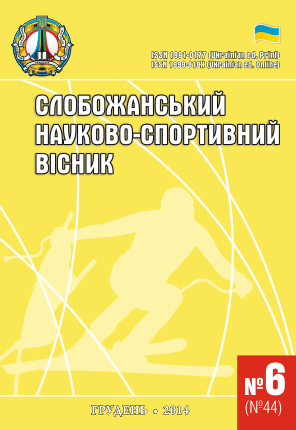Evaluation of the level of development of sport tourism China and Europe
DOI:
https://doi.org/10.15391/snsv.2014-6.025Keywords:
sport, tourism, heritage, UNESCO, China, EuropeAbstract
Purpose: to evaluate the level of development of sport tourism China and Europe. Material and Methods: analysis and generalization of literature and electronic sources, official web-sites. Results: a significant increase in the number of tourists in recent years. The level of development of sport tourism is constantly growing and shows mass popularity among the population. Conclusions: the development of sport tourism in Europe more than in China. Improvement of forms of organization and means of sport tourism will attract more people.References
Bulashev A. Ya. Sportivniy turizm [Sport tourism], 2009, 331 p. (rus)
Bulashev A. Ya., Ma Tszingan. Slobozans’kij nauk.-sport. visn. [Slobozhanskyi science and sport bulletin], Kharkіv, 2004, vol. 7, pp. 273–278. (rus)
Geograficheskij spravochnik “O stranah” [Gazetteer "Country Info"], Access mode : http://ostranah.ru/.
Grynova T.I. Slobozans’kij nauk.-sport. visn. [Slobozhanskyi science and sport bulletin], Kharkіv, 2013, vol. 5, pp. 82–85. (rus)
Dmytruk O. Yu., Shchur Yu. V. Sportivno-ozdorovchiy turizm [Sports and health tourism], 2008, 280 p. (ukr)
Kvartalnov V. A. Turizm [Tourism], 2002, 320 p. (rus)
Samie poseschaemie strani mira [The most visited country in the world], Access mode : http://wayempire.com/samyie-poseschaemyie-stranyi-mira/. (rus)
Wu Linna. Slobozans’kij nauk.-sport. visn. [Slobozhanskyi science and sport bulletin], Kharkіv, 2014, vol. 5, pp. 82–86. dx.doi.org/10.15391/snsv.2014-5.015 (rus)
Fedoryuk O. Slobozans’kij nauk.-sport. visn. [Slobozhanskyi science and sport bulletin], Kharkіv, 2013, vol. 3, pp. 171–175. (ukr)
UNESCO: World Heritage Centre, Access mode : http://whc.unesco.org.
Downloads
Published
How to Cite
Issue
Section
License
Copyright (c) 2014 (Wu Linna) У Ліньна, (Vitalii Brusentsev) Брусенцев Віталій Олександрович

This work is licensed under a Creative Commons Attribution 4.0 International License.
Our publications make use of copyright CREATIVE COMMONS open access journals.
Authors published in this journal agree to the following terms:
1 The authors reserve the right of authorship of the work and pass the journal right of first publication of this work are licensed under the Creative Commons Attribution License, which allows others to freely distribute the published work with reference to the authors of the original work and the first publication of this magazine.
2 The authors have the right to enter into separate agreements for additional non-exclusive distribution of work in the form in which it was published the magazine (such as work place electronic repository institution or publish as part of the monograph), provided that the reference to the first publication of this magazine.

 Attention, authors!
Attention, authors!


